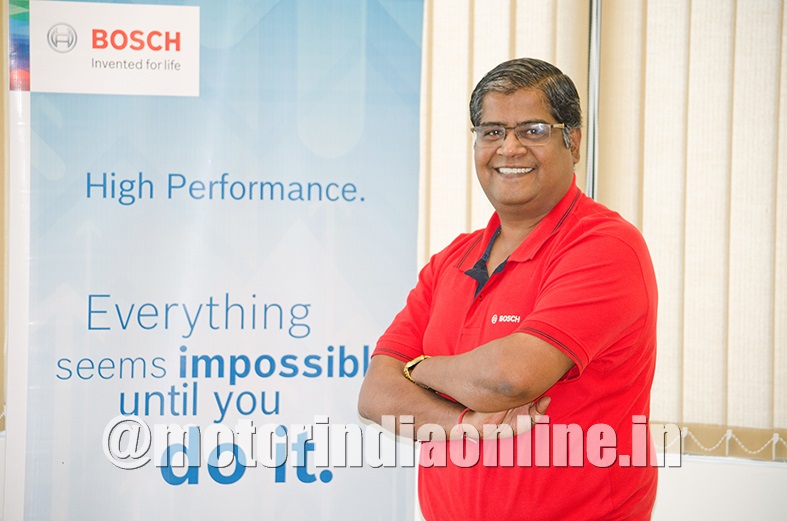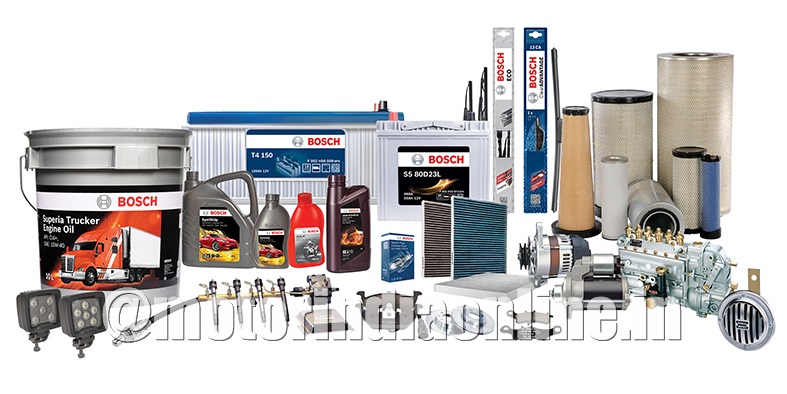– Mr. Anjan Kumar R, Regional President, Automotive Aftermarket, Bosch Ltd., India
The rapidly globalizing world is springing up with new opportunities for the mobility sector, especially with changes in vehicle technology that are deemed efficient, safe and reliable. Over the next few years, this will lead to newer verticals and opportunities for the auto component manufacturers. Incumbents in the automotive industry should prepare for a changing landscape as India grows into the world’s third largest passenger vehicle market and the global trends disrupt the sector.

The automotive aftermarket industry is expected to undergo gradual but profound changes. New technologies and major changes that accompany them will be crucial factors in the way auto part manufactures and suppliers will operate in order to maintain a strong position in the future. The auto parts market is bound to be affected by shifts in vehicle technology. Learning from past disruptions in other industries, we know that not having the requisite strategies to cope with these disruptions can lead to decline not just for individual, established corporations but also for whole sub-industries. But, as much as experts agree that significant changes are ahead, a big picture of all trends and ideas to face them needs to be urgently developed.
Changing aftermarket consumer needs
The passenger car parc today stands at a healthy base of over 29 million units and is set to grow consistently over the next 8-10 years. Aligned with a growing GDP, disposable incomes in India’s households is increasing. The growing potential of rural India opens up opportunities for growth of both new and used cars. At the same time, vehicle servicing needs are on the rise. Apart from the still high accident rates and wear & tear of parts due to poor road conditions in India, new operating models such as fleets and taxi aggregators are leading to a higher average kms running/year, thereby increasing the servicing needs.
Automobiles last longer
As technologies advance and vehicles become more robust, the average age of automobiles steadily increases. Since 2002, the average age of cars has increased by nearly 16%, from 9.78 years to 11.33 years. More impressively, just over 10% of that growth occurred in the past five years. Some of the major factors behind this are the coming up of organized used car market, improving vehicle build quality & OE standards, improved emphasis & awareness about car maintenance and a lack of strong regulations for life cycle of automobiles in India. The average age of other light vehicles such as pick-up trucks and light vans has also increased. While this growth is expected to level out before the end of this decade, longer-lasting cars present a great boon for aftermarket auto parts manufacturers, as older vehicles require more repairs and maintenance, thereby necessitating more aftermarket parts.
Consolidation among distributors
The automotive aftermarket in international markets are already experiencing the consolidation trend, with few big distributors holding a dominant position in the need to reach critical mass and leverage economies of scale. In the medium to long term, we also see this as a possibility for the Indian market.
Large distributors will pursue aggressive growth strategies, including takeovers of smaller businesses with strong dealer networks and manageable receivables. In such a scenario, what will still be intact is workshops as the catchment point for repairs, that is where the pull lies.
Indian consumers are increasingly using digital channels in both their research & purchase process. This will lead to higher innovation as we will see new business models evolving in the aftermarket space. It now becomes interesting to see how the adoption of e-commerce channels for spareparts purchase develops. Internally as well, digitization of processes and systems offers a huge opportunity for organizations today to achieve the highest levels of operational excellence and be prepared for adapting to disruptive business models.
Electrification on the rise
The market for passenger vehicles in the country will evolve in the context of several larger trends, some specific to India, and some relevant globally. These include favorable macro-economic and demographic trends like the automotive sector currently contributing more than 7 per cent to India’s GDP. The Automotive Mission Plan 2016-26 sets an aspiration to increase the contribution to 12 per cent. Electrification has just started to take off in India. Factors such as declining prices of batteries and supportive policies from the Government are stimulating the segment’s growth.
The pros and cons of electrification continue to evolve. Reduction in emissions and decreased dependency on oil imports are clear advantages of electrification. The level of adoption of electric vehicles will determine its impact on the automobile industry. According to industry experts, people carriers like buses, two- and three-wheelers, luxury passenger vehicles and light commercial vehicles could see maximum penetration by 2030.
Going autonomous
Looking into the future of the automotive industry, autonomous vehicles have been an important focus area, with companies looking to make them a reality. The pace of their progress to the mainstream consumer market, however, isn’t the only challenge facing automakers. Even if AV’s develop faster than expected, automotive OEMs face huge, expensive technological hurdles in other areas, including MPG/Emissions requirements, IoT-enabled features and new market expansion.
The automotive aftermarket in India is thus poised for consistent growth fueled by a growing vehicle parc, conducive business environment and pan-region potential, including rural areas. With the right distribution approach and an optimized & digitized process landscape, auto component players will have huge growth opportunities.
